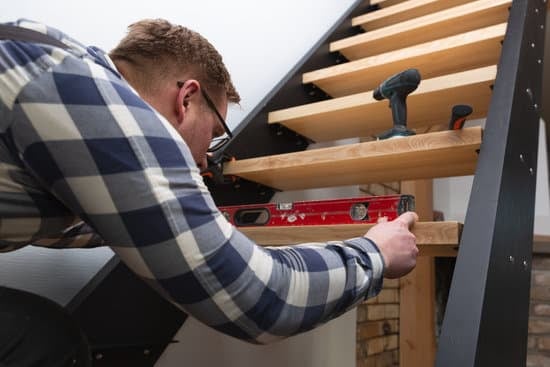In today’s digital age, having a strong and reliable mobile network in your home is essential. From working remotely to streaming movies and staying connected with loved ones, we rely on our smartphones and other mobile devices more than ever before. However, poor network strength can lead to dropped calls, slow internet speeds, and frustrating interruptions in our daily lives.
To improve the mobile network in your home, it is crucial to understand the factors that affect its strength. Various elements like distance from cell towers, obstructions such as walls and buildings, and interference from other electronic devices all play a role in determining the quality of your connection.
Before implementing any improvements, it is important to evaluate your current mobile network coverage. This involves identifying dead spots or areas with weak signals in your home where you experience connectivity issues. With this knowledge, you can then determine the best course of action for improving your network strength.
By following some simple steps and utilizing various tools and technologies, such as optimizing the placement of your Wi-Fi router and utilizing antenna enhancements, you can significantly boost your signal strength. Additionally, Wi-Fi extenders, repeaters, and mobile signal boosters are effective solutions for extending coverage areas.
Clearing interference from neighboring networks and optimizing bandwidth allocation are also key strategies for enhancing mobile network performance. Lastly, upgrading your internet service can provide improved speed and reliability for a seamless mobile experience within your home.
With these different approaches at hand, you can take control of your mobile network’s performance and enjoy uninterrupted connectivity in the comfort of your own home. By exploring the following sections of this article, you will gain valuable insights into improving not only the quality but also the reliability of your home’s mobile network connection.
Understanding the Factors Affecting Mobile Network Strength
Having a strong mobile network in your home is essential for seamless connectivity and uninterrupted communication. However, there are various factors that can affect the strength of your mobile network. Understanding these factors will help you identify potential issues and take necessary steps to improve the network strength.
Distance from Cell Tower
The distance between your home and the nearest cell tower plays a crucial role in determining the strength of your mobile network. The farther you are from the tower, the weaker your signal will be. This is because signals tend to weaken as they travel longer distances, especially if there are obstacles like buildings or trees in their path.
If you live in a rural area or far away from a cell tower, it’s likely that you may experience weak mobile network coverage. In such cases, implementing signal boosting techniques like antenna enhancements or mobile signal boosters may be necessary to improve network strength.
Building Materials
The materials used in the construction of your home can also impact mobile network strength. Certain building materials like concrete, metal, or thick walls can block or weaken cellular signals. This means that if your home has a lot of concrete walls or metal structures, you might experience poor network coverage inside certain areas of your house.
To mitigate this issue, consider optimizing the placement of your Wi-Fi router in an area with less obstruction and closer proximity to areas where you frequently use your devices. Additionally, using Wi-Fi extenders or repeaters strategically placed throughout your home can help extend wireless coverage and enhance signal strength.
Network Congestion
Network congestion occurs when there is excessive traffic on a particular cell tower, leading to slower internet speeds and weaker signals for users connected to that tower. This commonly happens during peak hours when many people are actively using their devices.
To determine if network congestion is affecting your mobile network strength, check if you experience poor connectivity during certain times of the day when more people are likely to be using their devices. If this is the case, reducing bandwidth usage during peak hours or upgrading your internet service can help alleviate the issue.
Understanding these factors that affect mobile network strength will help you identify potential problems and take appropriate steps to improve your network coverage. By addressing issues such as distance from cell towers, building materials, and network congestion, you can enjoy a stronger and more reliable mobile network in your home.
Evaluating Your Current Mobile Network Coverage
Before making any improvements to your mobile network at home, it is important to evaluate the current coverage in your area. This will help you determine the extent of the problem and identify potential areas for improvement. Here are some steps you can take to evaluate your current mobile network coverage:
- Check signal strength: Start by checking the signal strength on your mobile device in different areas of your home. Walk around each room and note any areas where the signal strength is weak or nonexistent. Keep in mind that signal strength can be affected by factors such as distance from cell towers, obstacles like walls or furniture, and external interferences.
- Perform a speed test: In addition to checking signal strength, it is also important to measure the actual speed of your internet connection. Slow internet speeds can lead to dropped calls, buffering issues, and slow data transfer rates. You can use online tools or mobile apps to perform a speed test and compare it against the advertised speed from your internet service provider.
- Research coverage maps: Many mobile network providers offer coverage maps on their websites that show the predicted signal strength in specific areas. These maps can give you an idea of how strong the mobile network coverage should be in your location. However, keep in mind that these maps are only estimates and may not always reflect the actual coverage.
Once you have evaluated your current mobile network coverage, you will have a better understanding of where improvements are needed. Whether it’s enhancing Wi-Fi signals or investing in a mobile signal booster, addressing these issues will ultimately lead to improved connectivity and a better overall experience using your mobile devices at home.
Optimal Placement of Your Wi-Fi Router
The Importance of Router Placement
The placement of your Wi-Fi router can have a significant impact on the strength and reliability of your mobile network. By optimizing the placement of your router, you can ensure that your devices receive a strong and stable signal throughout your home.
Choosing a Central Location
One key factor to consider when placing your Wi-Fi router is the location. It is important to choose a central location in your home that allows for equal coverage in all directions. Placing the router near the center will help eliminate dead zones and provide better signal strength throughout your living space.
Avoid placing the router near walls or inside cabinets as this can obstruct the signal and reduce its reach. Instead, opt for an open area away from any potential obstructions. Elevating the router by placing it on a shelf or mounting it on the wall can also improve its range.
Minimizing Interference
Another important consideration when positioning your Wi-Fi router is minimizing interference from other devices. Keep your router away from cordless phones, microwave ovens, baby monitors, and other electronic devices that operate on similar frequencies, as they can interfere with the wireless signal.
Similarly, avoid placing your router near metal objects or large appliances as they can block or weaken the signal. If you have multiple floors in your home, it may be beneficial to place additional routers or wireless access points strategically to ensure better coverage throughout all levels.
By carefully selecting an optimal location for your Wi-Fi router, you can significantly improve the performance of your mobile network within your home. In the next section, we will explore antenna enhancements that further boost signal strength and coverage.
Boosting Your Signal with Antenna Enhancements
One effective way to improve the mobile network in your home is by boosting your signal with antenna enhancements. Antenna enhancements can help increase the coverage and strength of your mobile network, allowing for better connectivity throughout your home. Here are some strategies you can use to boost your signal with antenna enhancements:
- External Antennas: Consider installing an external antenna on the outside of your home. These antennas are designed to pick up stronger signals from cell towers and transmit them into your home, improving the overall network coverage. External antennas are available in different types, such as omnidirectional antennas that receive signals from all directions, or directional antennas that focus on signals from a specific direction.
- Indoor Signal Boosters: Another option is to use indoor signal boosters or repeaters. These devices amplify and distribute the mobile signal within your home, extending coverage to areas with weak reception. Signal boosters typically consist of an external antenna that captures the existing signal and an internal antenna that broadcasts the amplified signal inside your house.
- Wi-Fi Router Antenna Upgrades: Don’t forget about enhancing the Wi-Fi router itself. Many routers have detachable antennas that can be upgraded to high-gain or directional antennas for improved signal strength and range. High-gain antennas transmit signals further, while directional antennas focus the Wi-Fi signal in a specific direction, reducing interference and increasing coverage in that area.
By implementing these antenna enhancements, you can significantly improve the strength and coverage of your mobile network in your home. It’s important to evaluate which option works best for you based on factors such as distance from cell towers, building materials, and any obstructions that may interfere with the signal. With an enhanced mobile network, you can enjoy seamless connectivity for all your internet browsing, streaming, and communication needs within your home.
Utilizing Wi-Fi Extenders and Repeaters
Wi-Fi extenders and repeaters can be valuable tools for improving the mobile network in your home. These devices are designed to amplify and extend the range of your existing Wi-Fi signal, making it stronger and more reliable throughout your entire house.
One option for extending your Wi-Fi signal is to use a Wi-Fi extender. A Wi-Fi extender works by capturing the existing Wi-Fi signal from your router and rebroadcasting it to increase its coverage area. This can be especially useful in larger homes or homes with thick walls that may impede the reach of your original Wi-Fi signal.
Another option is a Wi-Fi repeater, which takes the existing Wi-Fi signal and repeats it, effectively creating a new network that extends the coverage of your original network. This can be particularly beneficial if you have dead spots or areas of weak signal within your home.
When utilizing either a Wi-Fi extender or repeater, it’s important to consider their placement. Ideally, you want to position these devices in an area where they can receive a strong existing Wi-Fi signal while still being able to rebroadcast it effectively.
| Wi-Fi Extender | Wi-Fi Repeater |
|---|---|
| Amplifies and extends the range of an existing Wi-Fi signal. | Takes an existing Wi-Fi signal and repeats it, creating a new network that extends coverage. |
| Useful for larger homes or homes with thick walls. | Beneficial for eliminating dead spots or areas with weak signals. |
| Requires proper placement to receive a strong existing Wi-Fi signal. | Also requires proper placement to effectively rebroadcast the signal. |
Exploring Mobile Signal Boosters and Repeaters
In the pursuit of a strong mobile network in your home, exploring mobile signal boosters and repeaters can be highly beneficial. These devices are designed to enhance the existing cellular signals, allowing for improved coverage and stronger connections throughout your home. By understanding how these devices work and considering their usage, you can significantly enhance your mobile network experience.
Mobile signal boosters work by capturing the weak cellular signal from outside your home and amplifying it before rebroadcasting it inside. The booster consists of three main components: an outside antenna that captures the existing signal, an amplifier that boosts the signal strength, and an inside antenna that broadcasts the amplified signal indoors. This creates a larger radio frequency (RF) footprint within your home, allowing for better reception throughout.
When considering a mobile signal booster, it is crucial to choose one that is compatible with your specific network carrier and supports the frequencies used in your area. Different carriers utilize different frequencies for their networks, so selecting a booster that aligns with your carrier’s frequency bands is essential for optimal results.
Another option to explore is mobile repeaters. While similar to boosters in functionality, repeaters differ in that they take an existing cellular signal from within your home and reproduce it at a higher power level.
They serve as a bridge between the weak indoor signals and outdoor cell towers, resulting in better coverage and improved call quality. Mobile repeaters can be particularly effective in areas where the external cell signal is relatively strong but fails to penetrate interior walls or structures.
Before investing in a mobile signal booster or repeater, it is best to determine if this solution aligns with your specific needs and circumstances. Factors such as your location, proximity to cell towers, obstructions like buildings or hills, and the size of your home can impact the effectiveness of these devices. Additionally, check if any carriers have restrictions or regulations regarding their usage.
By exploring mobile signal boosters and repeaters, you can significantly enhance the mobile network in your home. These devices have the potential to improve coverage, call quality, and data speeds, ensuring seamless connectivity throughout your living space. However, it is crucial to consider factors specific to your situation before making a purchase and ensure compatibility with your carrier’s network frequencies for optimal results.
Tips for Clearing Interference and Optimizing Bandwidth
One of the biggest challenges in maintaining a strong mobile network in your home is dealing with interference that can hinder signal quality and overall network performance. Interference can come from various sources, such as neighboring Wi-Fi networks, electronic devices, or physical obstructions. Luckily, there are several tips you can follow to clear interference and optimize bandwidth in order to improve your mobile network at home.
Firstly, it’s essential to identify the main sources of interference. You can use apps or software tools that analyze Wi-Fi networks in your area and identify the channels that are crowded with other networks. By choosing a less congested channel, you can minimize interference from other nearby Wi-Fi networks and improve signal quality.
In addition to Wi-Fi interference, electronic devices like cordless phones, baby monitors, microwave ovens, wireless speakers, and even Bluetooth devices can also cause significant disruption to your mobile network. It’s recommended to keep these devices away from your router or change their positions if they are interfering with your signal.
Another way to optimize bandwidth is by prioritizing specific applications or devices on your network. For example, if you frequently use video streaming services or online gaming platforms on certain devices, you can allocate more bandwidth to these applications or devices using Quality of Service (QoS) settings available on most modern routers.
Lastly, keeping your router firmware up to date is crucial for optimal performance. Router manufacturers regularly release updates that provide bug fixes and optimizations for better signal strength and increased stability. Make sure to check for any available firmware updates through the manufacturer’s official website or directly from the router’s administration page.
Implementing these tips will not only help clear interference but also optimize bandwidth usage in your home network. By doing so, you can enhance both the speed and reliability of your mobile network connection, ensuring seamless connectivity throughout your home.
| Tips | Description |
|---|---|
| Identify Wi-Fi congestion | Use apps or software tools to identify crowded channels and switch to a less congested one. |
| Avoid electronic device interference | Keep devices like cordless phones, baby monitors, and Bluetooth devices away from the router or change their positions. |
| Allocate bandwidth with QoS | Prioritize specific applications or devices using Quality of Service (QoS) settings on your router. |
| Keep router firmware updated | Regularly check for firmware updates from the manufacturer’s website or through the router’s administration page. |
Upgrading Your Internet Service for Improved Mobile Network
In today’s fast-paced digital world, having a strong and reliable mobile network is crucial. It ensures that you can seamlessly connect to the internet, make calls, and use various mobile applications without any disruptions. While optimizing your Wi-Fi router and utilizing signal boosters can significantly improve your mobile network strength at home, sometimes upgrading your internet service is the ultimate solution to achieve a faster and more stable connection.
When it comes to upgrading your internet service, there are several options available depending on your needs and location. The most common types of internet connections include DSL (Digital Subscriber Line), cable, fiber optic, and satellite. Each type has its own advantages and limitations, so it’s important to research and compare them before making a decision.
DSL is one popular option that uses existing telephone lines to deliver internet connectivity. It offers relatively high speed but may suffer from slower speeds as distance from the provider’s central office increases. On the other hand, cable internet utilizes coaxial cables to provide faster connection speeds and can handle higher bandwidths.
Fiber optic connections boast incredibly fast speeds by transmitting data as pulses of light through thin glass fibers. Lastly, satellite internet is an option for those living in rural or remote areas where other types of connections are not readily available.
Before deciding on an upgrade, consider factors such as download/upload speeds, data caps or limitations, customer support reliability, and pricing. You may also want to check with different service providers in your area for availability and package options that cater specifically to improving mobile network coverage at home.
Upgrading your internet service not only enhances mobile network performance but also improves overall connectivity for all devices in your home that rely on the internet connection. With faster download speeds and better upload capabilities, you’ll have fewer instances of buffering while streaming videos or experiencing lag during online gaming sessions. Investing in a higher quality internet service plan will undoubtedly enhance your online experience and keep you connected with ease.
Conclusion
In conclusion, improving the mobile network in your home is crucial for enjoying seamless connectivity in today’s digital age. With many factors affecting the strength of your mobile network, it is important to evaluate your current coverage and take necessary steps to optimize it.
One key aspect of improving your mobile network is the proper placement of your Wi-Fi router. By positioning it in a centralized location and away from potential obstructions, you can ensure maximum signal strength throughout your home. Additionally, utilizing antenna enhancements can help boost your signal even further.
Wi-Fi extenders and repeaters are also effective tools for extending the range of your network. These devices amplify and retransmit the Wi-Fi signal, ensuring that every corner of your home has reliable connectivity. Mobile signal boosters and repeaters go a step further by amplifying cellular signals, making them particularly useful in areas with poor reception.
Clearing interference and optimizing bandwidth are vital for enhancing your mobile network performance. By identifying and resolving sources of interference such as physical obstructions or neighboring networks on the same channel, you can ensure optimal signal quality. Upgrading your internet service to a higher speed plan can also contribute to an improved mobile network experience.
By following these tips and implementing the strategies outlined in this article, you can significantly improve the mobile network in your home and enjoy seamless connectivity. Whether you use your mobile device for work, entertainment, or staying connected with loved ones, having a strong and reliable connection is essential in today’s connected world. So take action today and start enjoying uninterrupted internet access at home.
Frequently Asked Questions
How do I boost my mobile signal at home?
To boost your mobile signal at home, there are a few things you can try. Firstly, make sure you are in an area where your service provider has good coverage. If you’re in a remote or rural area, it might be harder to get a strong signal. Secondly, consider using Wi-Fi calling if your phone and service provider support it.
This allows you to make calls over your Wi-Fi network instead of relying solely on cellular signal. Another option is to use a signal booster or repeater, which amplifies the existing signal in your home. These devices work by capturing the weak signal from outside and then amplifying it inside your house. Finally, keeping your phone near a window or higher up may help improve signal strength as it reduces obstructions that can weaken the signal.
Why is my mobile signal so bad in my house?
There can be several reasons why your mobile signal is bad in your house. One common issue is the presence of physical barriers that obstruct the cellular signals from reaching indoors effectively. Thick walls made of concrete or metal can significantly weaken the signal strength indoors.
Additionally, environmental factors like trees, hills, or buildings can also block or interfere with signals when they are between the cell tower and your location. Distance from the nearest cell tower is another factor – if you live far away from one or there are none nearby due to geographic limitations, you may experience weaker signals indoors compared to someone who lives closer to a cell tower.
What happens when you dial * 3370?
Dialing *3370 on some older mobile phones activates Enhanced Full Rate Codec (EFR), which improves voice call quality but uses up more battery power since it is a more advanced audio coding algorithm than standard coding used for calls without EFR enabled. However, this feature might not apply to newer smartphones as they are generally optimized for high-quality audio already and don’t require EFR activation.
It’s always recommended to check with your specific device’s user manual or contact your service provider for accurate information about features like *3370, as it can vary from phone to phone and network provider.

I’m thrilled to have you here as a part of the Remodeling Top community. This is where my journey as an architect and remodeling enthusiast intersects with your passion for transforming houses into dream homes.





